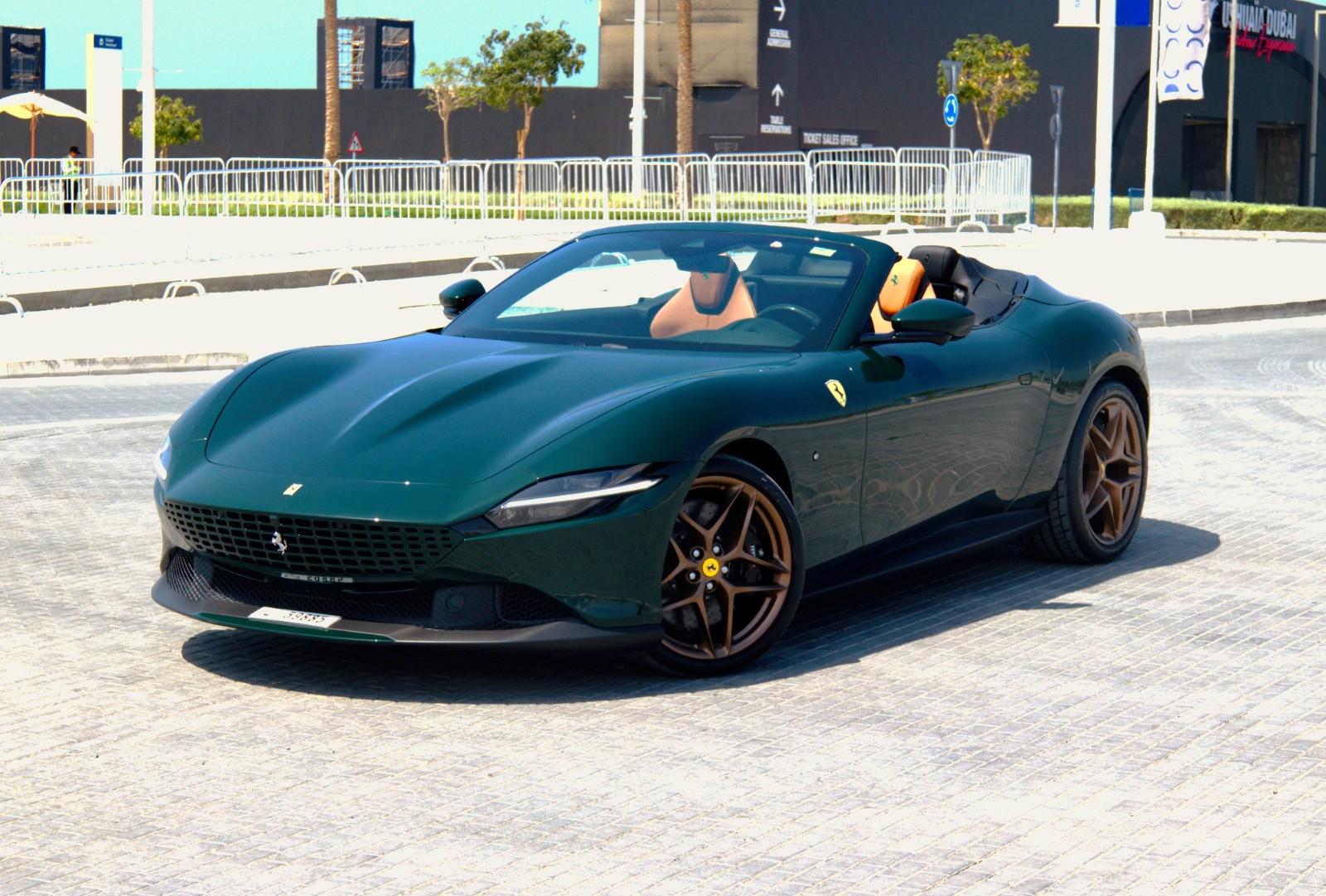The title of the fastest car in the world in 2025 belongs to the Koenigsegg Jesko Absolut, with a claimed top speed exceeding 530 km/h (over 330 mph). This hypercar pushes automotive engineering to new limits, combining extreme power, advanced aerodynamics, and cutting-edge technology to achieve speeds previously thought impossible.
Many contenders, such as the Bugatti Chiron Super Sport 300+ and the SSC Tuatara, also offer breathtaking performance, but the Jesko Absolut currently holds the edge based on its theoretical top speed. Understanding what makes these vehicles the fastest highlights the rapid pace of innovation within the hypercar world and how close manufacturers are coming to breaking speed records.
Defining the Fastest Car in the World
Determining which car holds the title of the fastest involves specific measurements, official procedures, and clear distinctions between types of vehicles. Understanding these factors clarifies why different cars may claim to be the fastest.
Criteria for Determining Speed Records
The primary measure is a car’s maximum top speed achieved under controlled conditions. This speed must be a verified peak, often recorded over a flying mile or kilometer to minimize acceleration effects. Consistency matters; many tests require the car to complete runs in both directions within a given time frame to average out wind or slope advantages.
Additionally, the car must be street-legal and production-based if competing for certain recognized titles. Modifications or experimental parts can disqualify a vehicle from record consideration.
Official Record Verification Processes
Organizations like Guinness World Records or the FIA oversee the verification process. Verification typically involves independent timing equipment, GPS-based telemetry, and official observers.
The vehicle must follow strict test protocols, including multiple speed runs in opposing directions. This ensures fairness against environmental factors. Documentation, video evidence, and third-party validation are standard requirements.
Without official sanctioning and transparent testing procedures, claimed speeds remain unofficial and often disputed.
Difference Between Production and Prototype Cars
Production cars are vehicles manufactured in significant numbers and available for public purchase. They usually meet regulatory standards for road use, including emissions and safety requirements. Speed records for production cars must be achieved without removing parts or adding specialized equipment beyond factory specifications.
Prototypes or highly modified cars, on the other hand, may use experimental technology, contain non-standard parts, or be built solely to break speed records. These vehicles often are not street-legal and don’t represent consumer-available vehicles.
Many speed claims come from prototypes, but recognized records prioritize production models to maintain relevance to everyday drivers.
Current Record Holder for the Fastest Car
The fastest production car achieves its record through exceptional top speed capabilities, advanced engineering, and precise performance metrics. The details highlight both its measurable achievements and the technology behind its capabilities.
Top Speed Achievements
The Bugatti Chiron Super Sport 300+ currently holds the production car top speed record. It reached 304.77 mph (490.48 km/h) in 2019 on a test track. This speed places it above most competitors in closed-course conditions.
Other contenders like the SSC Tuatara have recorded lower top speeds, approximately 282 mph. However, the Chiron’s official top speed remains the fastest verified for a road-legal production car.
Technological Innovations
The Chiron Super Sport 300+ uses an 8.0-liter quad-turbocharged W16 engine, producing around 1,577 horsepower. It features aerodynamic enhancements, including a specially designed rear wing and extended bodywork to reduce drag at extreme speeds.
Its carbon fiber construction balances lightweight design with strength for stability. Cooling and tire technology are optimized to withstand intense heat and pressure from runs at over 300 mph.
Notable Performance Specifications
- Engine: 8.0L quad-turbo W16
- Horsepower: 1,577 hp
- Top Speed: 304.77 mph (490.48 km/h)
- Aerodynamics: Extended rear diffuser and elongated body
- Material: Carbon fiber chassis and body panels
These elements combine durability, power, and control, enabling the Chiron Super Sport 300+ to maintain stability and safety at record-breaking speeds.
Previous Title Holders and Rivalries
The race for the fastest car has seen many landmark vehicles and intense competition among manufacturers. Key players have made advances in speed, technology, and production legitimacy, shaping the records over time.
Historical Top Speed Contenders
The McLaren F1 set a significant benchmark in 1998, reaching a top speed of 240.1 mph. This was remarkable for its time due to innovative materials like carbon fiber and titanium in a production vehicle. Later, the Bugatti Veyron Super Sport claimed the fastest production car title with speeds over 267 mph before losing the official record.
Electric hypercars have entered the fray recently, with the Rimac Nevera reaching 258 mph and the Aspark Owl surpassing it at 438.7 km/h (272 mph) in 2024. These examples highlight how speed records often reflect advances in engineering and changes in powertrain technology.
Iconic Industry Rivalries
Bugatti, Koenigsegg, Hennessey, and Rimac dominate the competition for top speed records. Bugatti held the top spot for over a decade with the Veyron and Chiron models, blending extreme performance with luxury.
Koenigsegg pushed the boundaries with specialized vehicles focusing on aerodynamics and lightweight design. Hennessey, known for powerful American hypercars, often challenges European manufacturers in speed runs. Rimac’s electric hypercars introduced a new type of rivalry based on electric powertrains versus traditional combustion engines.
These rivalries drive continuous innovation, with each brand striving for higher speeds and production legitimacy.
Milestones in Automotive Speed
The Thrust SSC, a jet-powered vehicle, broke the sound barrier in 1997 with a speed of 763 mph but does not count as a production car. This record underscores the difference between land speed records and street-legal production car records.
The Jaguar XK120 was the first production car to exceed 124 mph in 1949, setting initial benchmarks. Speeds have more than doubled since then, reflecting advances in technology, materials, and aerodynamics.
In recent years, surpassing 250 mph in street-legal vehicles has become a key milestone. Each new record combines performance with road legality and reasonable production numbers to be officially recognized.
Key Manufacturers and Their Contributions
Several manufacturers have pushed the limits of speed through innovative engineering and advanced technology. Their contributions have shaped the landscape of the world’s fastest cars by combining power, aerodynamics, and groundbreaking materials.
Bugatti’s Legacy
Bugatti is renowned for blending extreme power with luxury. It has set multiple production speed records with models like the Chiron Super Sport 300+, which surpassed 300 mph. Bugatti focuses on mastering aerodynamics and engine performance, using a quad-turbocharged W16 engine producing over 1,500 horsepower.
The brand’s ability to maintain stability and safety at ultra-high speeds comes from precise airflow management and lightweight materials. Bugatti’s cars also emphasize refined craftsmanship, making them exclusive beyond just speed. Their legacy lies in creating reliable hypercars capable of sustained top-speed runs.
Koenigsegg’s Engineering
Koenigsegg stands out for its use of cutting-edge technology and innovation focused on efficiency and power. Their Agera RS and Jesko models feature bespoke twin-turbo V8 engines producing around 1,600 horsepower. Koenigsegg also pioneered active aerodynamics to optimize downforce and drag dynamically.
The company’s approach integrates carbon fiber chassis, advanced suspension systems, and proprietary transmission technology. These innovations contribute to incredible acceleration and top-speed capabilities. Koenigsegg balances outright speed with drivability, often achieving record-setting runs on public roads or verified tracks.
SSC North America’s Breakthroughs
SSC North America gained attention with its Tuatara hypercar designed to exceed 300 mph officially. The Tuatara uses a 5.9-liter twin-turbo V8 engine generating 1,750 horsepower on E85 fuel. SSC’s breakthroughs focus on pushing the envelope in both raw power and aerodynamic efficiency.
Their efforts include extensive wind tunnel testing and innovations in cooling systems necessary for maintaining performance at extreme speeds. SSC emphasizes achieving both peak velocity and stability, attempting official speed records that rival Bugatti and Koenigsegg. Their technology continues to evolve rapidly in pursuit of the fastest production car title.
Factors Influencing Top Speed in Cars
Top speed in cars depends on a blend of mechanical power, design efficiency, and component quality. Achieving extremely high velocities requires minimizing resistance, maximizing engine output, and ensuring optimal contact with the road.
Aerodynamics and Vehicle Design
Aerodynamics plays a critical role in determining a car’s top speed. Cars shaped to reduce drag face less air resistance, allowing them to accelerate and maintain higher speeds. Designers focus on smooth lines, low profiles, and airflow management elements like spoilers and diffusers.
Weight also affects performance by contributing to rolling resistance, but its impact on top speed is less than aerodynamic drag. At very high speeds, even small improvements in the drag coefficient can make a significant difference in performance.
Materials such as carbon fiber help reduce overall weight without compromising structural integrity, allowing for better acceleration and stability at speed.
Engine Power and Performance
Engine power is measured in horsepower and torque, directly influencing the ability to reach high speeds. More horsepower enables faster acceleration and higher maximum velocity, while torque determines the force applied to the wheels.
The powertrain system, including transmission and differential ratios, must match the engine’s output to optimize speed. Incorrect gearing can limit top speed despite high engine power.
Advanced engines in hypercars often use forced induction methods like turbocharging to increase power density. Cooling systems are equally critical to maintain performance when operating at extreme speeds.
Tire Technology
Tires must withstand the high stresses and heat generated at top speeds. High-performance tires use specialized compounds that balance grip, durability, and heat dissipation.
Size and tread design affect rolling resistance and traction. Larger wheels can help increase top speed by covering more ground per revolution, but they also add rotational mass.
Safety standards and speed ratings guide manufacturers in producing tires capable of handling speeds over 300 mph. Proper inflation and tire condition are essential to prevent failure under extreme conditions.
Controversies and Challenges in Speed Records
The pursuit of the fastest car involves more than raw speed; measurement methods and environmental factors play critical roles. Disputes arise over how speed is verified, while safety and ecological concerns influence both testing and production.
Debates Over Measurement Methods
Speed records depend heavily on how measurements are taken. Two-way average speeds, GPS validation, and radar timing each offer different levels of accuracy. Some claimed records, like those of the SSC Tuatara, faced skepticism due to inconsistent data or unverifiable video footage.
Manufacturers often must comply with specific criteria to qualify their records as “production car” runs. Factors include road type, vehicle condition, and run direction. Inconsistent standards between organizations and informal attempts make comparisons difficult.
These disputes emphasize the need for transparent validation processes. Independent verification and repeatable runs are key to establishing credible speed records.
Environmental and Safety Concerns
Achieving extreme speeds raises significant safety risks. Cars surpassing 300 mph require specialized tires, reinforced structures, and precise driver skill. Even slight errors can be catastrophic.
Testing environments must also consider weather and track conditions. Wind resistance, temperature, and road surface affect results and safety margins. Controlled facilities are preferred but costly to maintain.
Environmental impact increases with such high-performance vehicles. Fuel consumption and emissions present challenges, leading some manufacturers to explore eco-friendlier technologies while maintaining speed potential.
Future Prospects for the World’s Fastest Cars
New innovations and powertrain developments are shaping the future of hypercar speed. Advances in aerodynamics, materials, and propulsion systems point to greater performance milestones and evolving definitions of what makes the fastest car.
Emerging Technologies
Automotive engineers increasingly use lightweight materials like carbon fiber and titanium to reduce mass without sacrificing strength. Active aerodynamics, such as adjustable wings and airflow channels, optimize downforce and drag dynamically, enhancing stability at ultra-high speeds.
Advanced computer modeling and artificial intelligence improve vehicle design and performance tuning. Innovations in tire compounds also allow safer grip at speeds above 300 mph, a critical factor in enabling record attempts. Additionally, emerging fields like solid-state batteries and electric turbocharging promise efficiency gains with less weight.
Predictions for Speed Records
Experts anticipate that future speed records will breach 310 mph, surpassing current benchmarks. Manufacturers continuously invest in wind tunnel testing and computational fluid dynamics to refine hypercar shapes that minimize drag while maximizing acceleration.
Some hypercar projects focus on controlled environments like closed tracks or salt flats to safely achieve and verify these speeds. Incremental improvements in power-to-weight ratios and traction control systems are also key elements expected to push records closer to or beyond 320 mph in the next decade.
Impact of Electric and Hybrid Powertrains
Electric and hybrid drivetrains are becoming central to the fastest car race. High-output electric motors provide instant torque, contributing to rapid acceleration and improved throttle response. Hybrid setups combine combustion engines with electric assistance, resulting in balanced power delivery and efficiency.
Battery technology advancements are allowing longer high-power discharges without performance drop-offs. Some manufacturers explore fully electric hypercars capable of speeds rivaling or exceeding those of traditional engines. This shift also introduces new challenges in cooling systems and weight management but promises a future where speed and sustainability coexist.
Cultural Impact of the World’s Fastest Cars
The fastest cars in the world shape not only automotive performance standards but also influence media portrayals and industry trends. Their design, speed records, and technology often become symbols in entertainment and inspire shifts in car manufacturing priorities.
Influence on Popular Media
The fastest cars frequently appear in movies, video games, and advertising, becoming icons of speed and luxury. Titles like the Bugatti Chiron and Koenigsegg Jesko are often featured in racing games and films, creating a direct link between real-world engineering feats and consumer fascination.
These vehicles symbolize technological progress and exclusivity, influencing how audiences perceive performance cars. They also drive interest in automotive culture, inspiring documentaries and social media content focused on innovation and speed.
Effect on Automotive Industry Trends
The quest for the fastest car generates advances in aerodynamics, materials, and powertrain technology. These innovations often trickle down to more accessible models, improving fuel efficiency, safety, and driving experience.
Manufacturers use speed records as marketing tools to boost brand prestige and accelerate development cycles. The focus on reducing drag and increasing horsepower drives research in electric and hybrid propulsion, reflecting how speed achievements can redefine industry priorities.
Frequently Asked Questions
Several production cars compete for the title of the fastest, each setting new benchmarks in top speed, acceleration, and technology. These vehicles demonstrate the latest engineering advances and have surpassed many previous records.
What car currently holds the title for the highest top speed?
The Bugatti Chiron Super Sport 300+ holds the record with a verified top speed of 304.77 mph (490.48 km/h). This makes it the fastest production car as of 2025.
Which car has been officially recognized as the fastest in 2025?
The Bugatti Chiron Super Sport 300+ is recognized as the fastest production car in 2025 by multiple sources and record-keeping bodies.
What are the top 10 fastest cars in the world as of this year?
The top 10 list includes cars like the Bugatti Chiron Super Sport 300+, SSC Tuatara, and others, with speeds ranging from about 250 mph to over 300 mph. Each holds verified or claimed top speeds relevant to their standing this year.
Which car surpassed previous speed records and by what margin?
The Bugatti Chiron Super Sport 300+ surpassed prior records by exceeding the 300 mph barrier, besting the SSC Tuatara which previously claimed 295 mph in verified runs.
How do the fastest cars compare in terms of acceleration and top speed?
While top speed defines the fastest cars, acceleration varies. Some cars reach 0-60 mph in under 3 seconds but focus primarily differs; for example, Bugatti models balance extreme speed with high acceleration.
What are the latest advancements in technology that power the current fastest car?
Advanced aerodynamics, lightweight materials, and highly efficient, high-output engines characterize the fastest cars today. The Chiron Super Sport 300+ uses a quad-turbocharged W16 engine and refined aerodynamics for stability at extreme speeds.



0 Comment